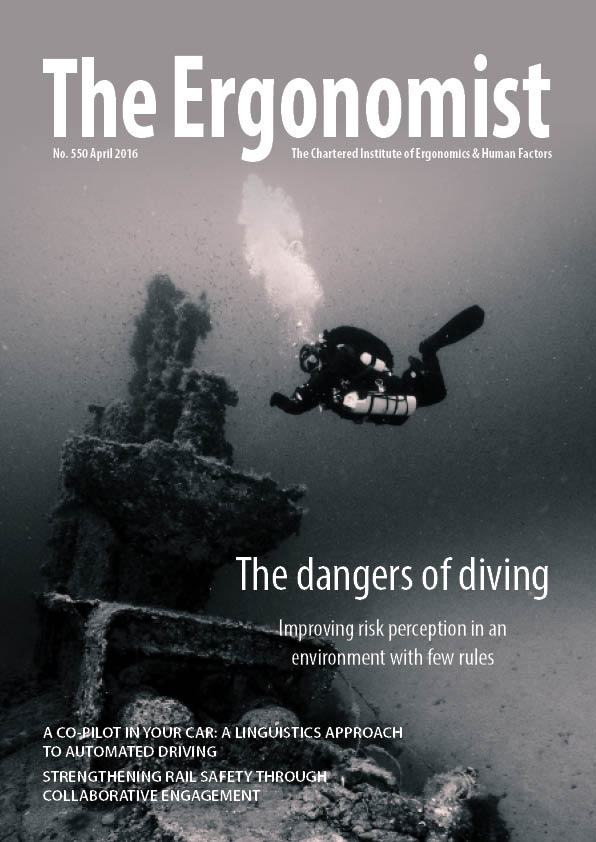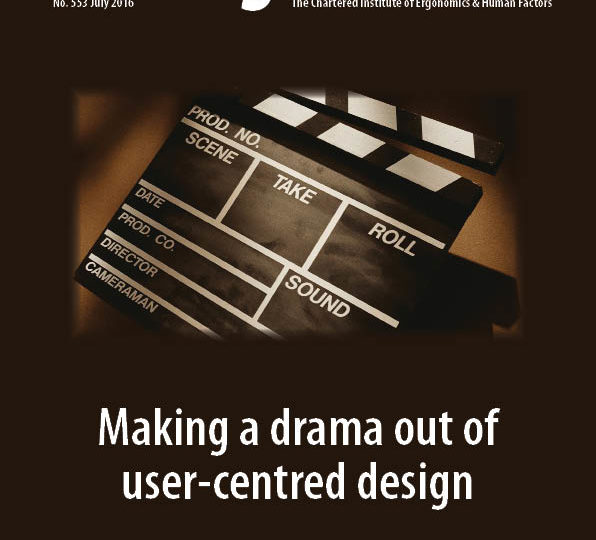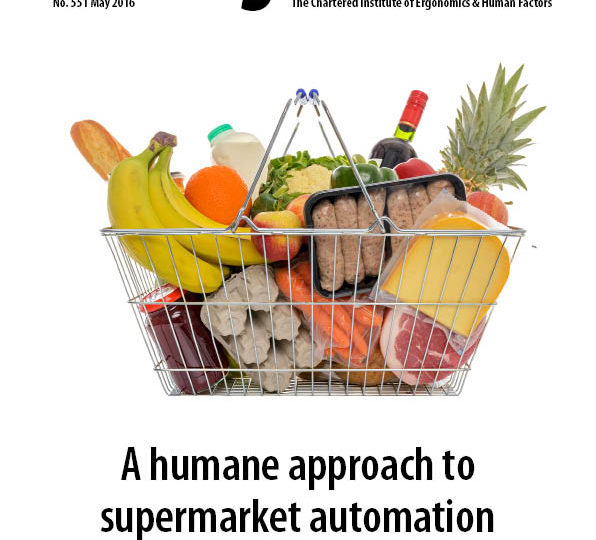
One outstanding feature of ergonomists and human factors specialists is their agility – the way in which they can take established principles and processes from one arena and successfully adapt them, often with little time or resources, to new and unknown areas.
With new frontiers constantly opening up in all sectors this agility will be ever more important in addressing the demand of new and often complex technologies. At the same time, a solid foundation in basic principles and a rigorous application of tried and tested strategies will help to secure the future of the discipline as the go-to knowledge base ready to tackle any new challenge.
In this month’s issue of The Ergonomist Gareth Lock takes ergonomics under the sea to look at how safety is managed in the dangerous world of diving. He examines a culture that can sometimes mean that risks are taken unnecessarily and asks an important question that can apply to any sector: how do you define a violation if there are no rules?
Alexander Eriksson and Neville Stanton discuss the relationship that exists between a driver and a semi-autonomous vehicle, using a linguistics approach to understand the way in which such a relationship can be built and managed successfully.
And Anjum Naweed describes how collaborative engagement has been used in the Australian railway system to reduce the risks of ‘signals passed at danger’ (SPADs) by engaging with stakeholders working in all aspects of the industry to understand why and how SPADs happen.
The Ergonomist is the membership magazine of Chartered Institute of Ergonomics and Human Factors. It is free to members. It is available in print, on the MyIEHF portal and as an app. Non-members can subscribe or buy individual issues on the app, which is available on iPhone, Android and Kindle. To find the app, search ‘ergonomist’ in the app store.
If you would like to contribute a letter, column or article to The Ergonomist, please contact the editor, Frances Brown: frances@ergonomics.org.uk.




